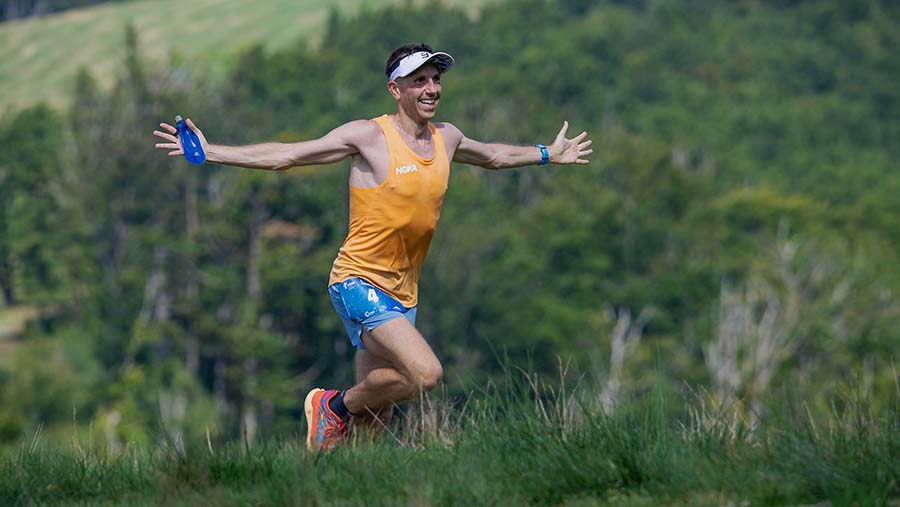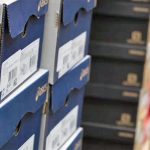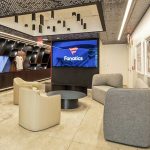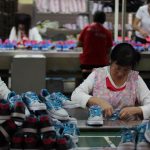Columbia Sportswear, Wolverine Worldwide, VF Corp. and Hanesbrands were among vendors in the active lifestyle space downwardly adjusting their guidance for the year in reporting Q2 results in the face of an increasingly promotional marketplace. However, more vendors than not were able to surprise on the upside.
Overall, of 20 publicly-held vendors in the active lifestyle space that regularly offer full-year guidance, nine, including Adidas, Skechers, Deckers Brands, On Holding, Yeti, Crocs, Acushnet Holdings, Solo Brands, and Garmin, raised their earnings or sales outlooks, or both. Six, including Wolverine, Columbia Sportswear, VF, Hanesbrands, Gildan Activewear, Clarus Corp., and Fox Factory, reduced their full-year guidance. Meanwhile, another five, namely, Under Armour, Vista Outdoor, Topgolf Callaway Brands, Nautilus, and Canada Goose, maintained their guidance from the prior quarter.
Some of those increasing guidance benefited from improved margins due to reduced lower freight costs or were helped by currency exchange tailwinds, but some capitalized on outsized demand.
Deckers Brands raised its outlook for the year as Hoka’s DTC business exceeded expectations in the fiscal first quarter that ended June 30 with a 63 percent surge. Hoka’s overall revenues jumped 27.4 percent in the quarter and are now expected to exceed 20 percent for the year on top of growth of 27 percent in fiscal 2023. Dave Powers, Deckers’ CEO, said on Deckers’ quarterly analyst call, “The Hoka brand’s well-managed ecosystem of access points continues to flourish.”
Deckers’ overall sales for its fiscal year are now expected to be approximately $3.98 billion, previously, $3.950 billion, up 9.7 percent against $3.63 billion in fiscal 2023. EPS is now expected in the range of $21.75 to $22.25, previously, between $21.10 to $21.60, up 13.6 percent at the midpoint from $19.37 in fiscal 2023.
On Holdings once again raised its sales guidance for the year after reporting second-quarter results that topped analyst targets. In the Americas, sales vaulted 59.8 percent in the period, driven by strong full-price selling and share gains within the run specialty channel.
Looking ahead, On raised its revenue outlook for the full fiscal year ending December 31, now expecting sales of CHF 1.76 billion, representing year-over-year growth of 44.0 percent. Previously, On forecast sales of CHF 1.74, representing full-year growth of 42.6 percent. Under the updated guidance, the second-half-year growth rate is projected to be close to 30 percent. On is maintaining its previous outlook on adjusted EBITDA margin at 15.0 percent.
Martin Hoffmann, co-CEO and CFO of On told analysts, “We are in a good position when it comes to our inventory. So, if we see stronger demand, then we will be able to fulfill that strong demand and as we have said in the past, our aspiration is always to exceed our expectations. And the order book is strong and the DTC engine is strong so we’re going with a lot of confidence into the second half.”
Yeti Holdings raised its guidance after reporting second-quarter results that handily topped Wall Street targets. Yeti officials predicted a return to double-digit growth in the fourth quarter as the firm recovers from a massive recall and taps success with newer product families and line extensions.
Matt Reintjes, president and CEO, said on a quarterly call, “Yeti is well positioned to win across our product categories and we’re focused on our product development and marketing to take advantage of the trends we view as long-term.”
Adjusted sales for the year are expected to increase between 4 percent and 5 percent, previously, growth between 3 percent and 5 percent. Adjusted EPS is expected in the range of $2.23 and $2.32 (previously, between $2.12 and $2.23), down 3.6 percent at the mid-point of guidance against adjusted EPS of $2.36 in 2022.
Adidas raised its guidance for the year due to the positive impact of the first sale of leftover Yeezy inventory and slightly better-than-expected sales and margins in the second quarter for its core Adidas business.
For 2023, Adidas now projects currency-neutral revenues to decline at a mid-single-digit rate, previously, a high-single-digit decline. Adidas expects a €450 million operating loss, previously, an operating loss of €700 million. Adidas’ underlying operating profit, excluding any one-offs related to Yeezy and the ongoing strategic review, is still anticipated to be around break-even.
Bjorn Gulden, Adidas’ CEO, said, “The core Adidas business was slightly better than we expected. Although we still have too much slow-moving inventory in the market, sell-through has been improving.”
Rival Nike missed on earnings for the first time in three years as compressed margins weighed on profits during its fiscal fourth quarter ended May 31. The sportswear giant also forecast first-quarter revenue below Wall Street targets as North America softness overshadowed China’s recovery. On the positive side, Nike indicated demand remains healthy across regions and inventories have been rebalanced to position the company for profitable growth going forward.
In its initial guidance for FY24, Nike said it expects revenue to rise mid-single-digits, compared with analysts’ expectations of a 6.3 percent rise. The gains are expected to be again led by Nike Direct with growth impacted by approximately four points of headwinds from the prior year from wholesale shipment timing and accelerated liquidation activities.
Under Armour reported results for the fiscal first quarter ended June 30 came in line with expectations amid progress in reducing inventory levels while reiterating its overall guidance for the year. However, sales guidance was reduced for North America as the brand was unable to overcome due to stubborn challenges at U.S. wholesale.
“Following a few quarters of pressure in our apparel business, our first quarter performance saw an impact from the persistent promotional environment in the challenging North American retail environment,” said Stephanie Linnartz, who joined Under Armour as president and CEO in late February, on a call with analysts.
Linnartz stressed that reviving U.S. sales remains one of the brand’s three strategic priorities under its recently-launched PTH3 (Protect This House Three) strategy.
North American revenues for its fiscal year ended March 31, 2024 are now projected to decline between 3 percent and 4 percent due to weaker-than-expected wholesale orders for the calendar third and fourth quarter. When reporting fiscal fourth-quarter results on May 6, UA had predicted North American sales would be “down slightly.”
Companywide, Under Armour said it still expects revenue to be flat to up slightly for the year. EPS is expected to be in the range of 47 cents to 51 cents, down 15.5 percent at the midpoint compared to 58 cents the prior year.
Skechers U.S.A. raised its outlook for the year as broad strength internationally and strength in the U.S. direct-to-channel offset a 25 percent decline in wholesale sales in the U.S. due to overall elevated inventories in the marketplace. CFO John Vandemore told analysts, “We expected the inventory congestion at our domestic wholesale partners to impact us most significantly in the second quarter.”
For the full year, sales are now projected between $7.95 billion and $8.1 billion, previously, $7.9 billion and $8.1 billion, up 7.9 percent at the midpoint. EPS is expected between $3.25 and $3.40, previously, $3.00 and $3.20, ahead of 39.7 percent at the midpoint from $2.38 in 2022.
Crocs raised its EPS and sales guidance for the year on better-than-expected Q2 results, but shares still fell sharply following their earnings release as the firm reduced its growth expectations for HeyDude, acquired in February 2022. HeyDude’s sales are expected to increase in 2023 in the range of 14 percent to 18 percent, previously, growth of 20 percent. This translates to approximately 3.5 percent to 7.5 percent growth on a 2022 pro-forma basis.
Andrew Rees, CEO of Crocs, said that while the company’s wholesale partners are “very pleased” with HeyDude’s performance, “many are cautious in terms of future bookings based on their overall market outlook and lack of historical data on HeyDude’s performance.” HeyDude is also facing warehouse constraints that limit at-once capabilities.
Crocs overall sales are now expected to increase in the range of 12.5 percent to 14.5 percent, previously, growth between 11 percent to 14 percent, as expectations were raised for the Crocs brand, now projected to see 12 percent to 13 percent growth, previously, 7 percent to 9 percent. Crocs brand’s momentum is boosted by strong growth in Asia and a DTC outperformance. Adjusted EPS is now expected in the range of $11.83 and $12.22, previously, $11.17 to $11.73, up 10.2 percent at the midpoint with a boost from above-plan margins.
Several sellers in the outdoor space were challenged by promotional pressure amid stubbornly elevated inventory levels.
Columbia Sportswear slashed its guidance for the year due to softer sell-through trends in the U.S. from “cautious consumer behavior” and elevated inventory levels, particularly in footwear, caused the company to slash its guidance for the year.
“The current environment is making it difficult to achieve the long-term growth algorithm that I believe we’re capable of,” said Tim Boyle, chairman, president and CEO, on an analyst call. “Given current trends we’re seeing in the business, we are taking a more conservative approach to how we plan the second half of the year.”
In particular, Boyle highlighted that while marketplace promotional activity continues to normalize, Columbia anticipates a higher level of clearance activity as the company works down inventory levels. Companywide inventories were up 21 percent year-over-year at the quarter’s end.
Columbia Sportswear’s sales are now expected to expand in the range of 2.0 percent to 3.5 percent, previously, growth of 3 percent to 6 percent. EPS is projected in the range of $4.40 to $4.65, previously, between $5.15 to $5.40, down 8.9 percent from the midpoint against $4.95 in 2022.
Wolverine World Wide slashed its full-year guidance due to an increasingly promotional U.S. wholesale environment. Revenue is expected to be in the range of $2.26 billion to $2.28 billion, previously, $2.53 billion to $2.58 billion, representing a decline of approximately 10.7 percent to 10.0 percent versus full-year 2022 (previously, growth of 0.0 percent to 2.0 percent). Adjusted EPS is expected to be between 45 cents and 55 cents, previously, $1.40 to $1.60, compared with adjusted EPS of $1.41 in 2022.
“Our second half outlook, as reflected in our updated annual guidance, is disappointing but we are confident that the work we are undertaking will drive significant profit improvement in 2024 and quickly set a strong growth foundation for the company,” said Chris Hufnagel, Wolverine’s newly minted CEO. “The current adversity has not only deepened our conviction that our strategic direction is more correct than ever, but that we must execute it with greater boldness and speed.”
VF Corp. reiterated its full-year EPS guidance range of $2.05 to $2.25 per share, versus $2.10 in FY23, but revenue is now expected to be “modestly down to flat” for the year, reflecting ongoing weakness in the wholesale business and a longer-than-anticipated turnaround for Vans. Previously, sales were expected to flat to up slightly in constant dollars.
VF’s CFO Matt Puckett told analysts, “Despite the progress made in lowering inventory levels, our wholesale business remains pressured. While our sell-out trends are evolving favorably in the outdoor segment, in particular, sell-in is challenged across the segment. Through the balance of the year, our order books have evolved a little more muted than previously anticipated in both the U.S. and Europe and reflect the continued cautious posture by many of our partners. This has affected brands across the portfolio, and is skewed disproportionately to Vans.”
He added, “Overall for VF, we continue to expect a better second-half revenue performance relative to the first half, reflecting an improving wholesale performance, moderating declines at Vans, and easing prior year compares as we move to the back part of the year considering the challenges we faced last year and our own poor execution, which muted our performance.”
Clarus Corp. trimmed its outlook for the year after reporting second-quarter results fell below analyst expectations due to promotional pressure and prolonged inventory de-stocking. Sales were down 27 percent in the quarter, sliding 24 percent at Black Diamond, 27 percent at the Sierra/Barnes ammunition segment, and 34 percent at its Adventure segment Rhino-Rack and Maxtrax.
Sales for the year are now expected in the range of $385 million to $400 million, previously, approximately $420 million, down 6.5 percent at the midpoint. Adjusted EBITDA is now projected in the range of $42 million to $50 million, approximately $60 million previously, down 23.3 percent at the midpoint against $63.0 million a year ago.
Hanesbrands lowered its full-year outlook to reflect the increased headwinds experienced in Australia and U.S. Activewear businesses. Activewear sales declined 19 percent in the second quarter due to ongoing headwinds within the activewear category, including soft consumer demand and excess channel inventory, combined with the company’s strategic brand-related actions continued to impact Champion sales in the U.S.
Companywide, net sales from continuing operations of approximately for the year are expected in the range of $5.80 billion to $5.90 billion, previously, between $6.05 billion to $6.20 billion. At the midpoint, this represents an approximate 6 percent decline as compared to the prior year on both a constant currency and reported basis. Adjusted earnings are now expected to range between 16 cents to 30 cents, previously, between 31 cents to 42 cents, against 98 cents in 2022.
Gildan Activewear reported Q2 sales were above expectations, but axed its full-year guidance as it sees current market conditions unfavorably impact activewear product mix, both in North American and International markets, as customers focus on lower-priced products. Revenues for the full year are projected to be flat to down low-single digits, previously, up low-single digits. Adjusted EPS is projected in the range of $2.55 to $2.65, previously, $3.11, down 16.4 percent at the midpoint from adjusted diluted EPS of $3.11.
Rhodri Harries, EVP and CFO, said, “During the quarter, we believe we outperformed the industry in a challenging environment, supported by positive activewear POS trends and the breadth of our product offering, which provided flexibility in what appears to be an increasingly more price-conscious environment. This speaks to our strong competitive position and our ability to continue to drive market share gains. This said, while we continue to expect our revenues to grow year-over-year in the second half, we believe it is prudent to lower our outlook for the full year to reflect the impact of current market conditions on activewear mix as well as near-term uncertainty related to the broader macro environment.”
Solo Brands reiterated its sales range for 2023 between $520 million to $540 million, up 2.4 percent from $517.6 million in 2022 as the second quarter came in as planned on strong wholesale growth. The parent of Solo Stove, Terra Flame, Chubbies, Oru Kayak, and Isle raised its outlook for adjusted EBITDA margin from between 16.5 percent to 17.5 percent to a range of 17 percent to 18 percent for the full year on better-than-expected margins in the second quarter.
Solo Brands’ CFO Somer Webb said, ”We are excited about the pipeline of new products we have planned for the back half of the year and the continued momentum we are seeing in our wholesale channel. With more than half of our sales anticipated in the second half of the year and a significant portion in the fourth quarter, there is a lot of business in front of us, but we remain optimistic about our ability to deliver in the near- and long-term.”
Photo courtesy Hoka
















